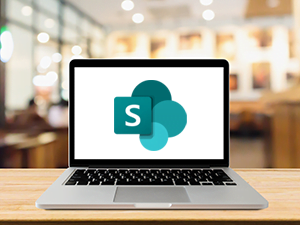Think SharePoint is just like your traditional file server? Thank again. SharePoint is SO much more than just a file server!
How does SharePoint Online differ from a traditional file server?
File servers are designed for centralized data storage and management. In the past, this was the only way to guarantee data security, access permissions, and file backups. However, in today’s remote first world, centralized file servers are a roadblock to productivity.
Instead of relying on slow VPNs to make a connection back to your file servers, you can easily access your SharePoint files anywhere you have an internet connection and with the speed of the cloud.
Going to be traveling and need to work offline? Synchronize your files for offline mode and once you get back to an active internet connection, your files will automatically sync back with the cloud.
Other Notable Differences:
Real-Time File Collaboration
Traditional file shares limit your active connections to documents, spreadsheets, and presentations. Trying to collaborate using legacy programs like Word and Excel often leaves you with duplicates, missing data, and a lot of frustration.
Documents, spreadsheets, and presentations powered by SharePoint Online allow complete real-time collaboration. Unlike other online cloud document platforms, SharePoint Online doesn’t limit you to only working through your web browser.
Open your SharePoint Online files using the familiar interfaces of Word, Excel, and PowerPoint and experience the same full collaboration features.
Auto Save and Version History
Chances are you’ve experienced the frustration of Word or Excel losing your work when you accidentally clicked something you shouldn’t have. SharePoint Online is smarter than that. It automatically saves and maintains version history, allowing you to roll back to earlier versions or completely revert to an earlier draft in the case of deletion or error.
Live File Sharing
SharePoint Online is a multi-tenant system. This means you can work securely with colleagues from other companies while maintaining the security of your own company’s network, content, and files.
The beauty of live file sharing is that instead of emailing an attachment back and forth with an outside associate, you can keep the file in its original location in SharePoint Online. The file can be viewed and edited without any intermediate steps.
This ensures that security permissions, storage, and IP remains within your company and allows you to skip the nightmare of determining which file attachment out of the 100 emails is the right one.
Transparent Audit Trail
SharePoint Online keeps a record of every person who accesses, edits or deletes files within your team portals. This ensures transparent communication between your company, customers, and partners and protects against malicious or accidental data corruption.
What does it take to make the switch to SharePoint Online?
A migration from a traditional network file server to SharePoint Online requires a detailed analysis of your existing data, file shares, and user permissions.
We start by reviewing your current infrastructure and sorting out what data needs to be migrated. Then, we create an efficient plan to move your data to your new SharePoint Online platform.
When we finish the data migration, we test all the different features to make sure that nothing has been lost or changed. We can also create custom portals, modify permissions, and set up collaboration features to automate file sharing with your team members, customers, and partners during this process.
Once complete, we offer a quick start training session with you and your staff. We cover SharePoint Online functionality, sharing files, document collaboration, syncing data to your local computer with One Drive and more.
How much does SharePoint Online migration cost? What are the factors involved?
The cost of your migration is based on a variety of factors. The project size, your data type, the accessibility and amount of documents and files, and the number of team portals that you’ll be migrating all help determine your project cost.
Want to learn more? You can visit our dedicated SharePoint page on our website by clicking: SharePoint Introduction
Or just give us a call today at (561) 582-9467!





